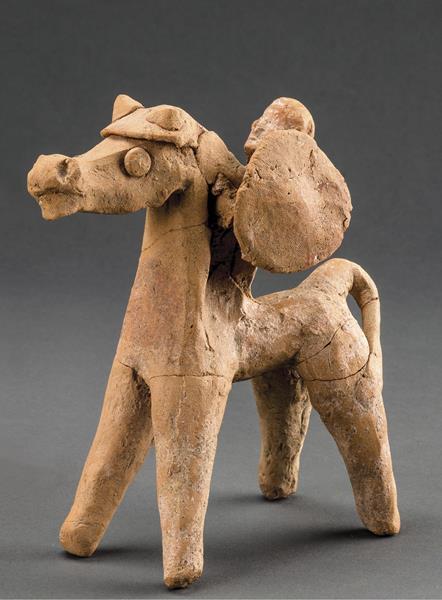
During the Iron Age II (ninth–sixth centuries B.C.E.), the time of the Kingdom of Israel, horse-and-rider figurines became common in the southern Levant. This type of ceramic figurine consisted of a horse with a male rider on its back—representing a mounted soldier. Most were handmade and solid. Within the type, there was variety: Some horses were harnessed, but others not; the riders’ armor and clothing also differed.
Horse-and-rider figurines first appeared in the Bronze Age, but they increased in popularity during the Iron Age, especially in the eighth century B.C.E., which corresponds to the rise and importance of cavalry in ancient Near Eastern warfare. Equating military might with cavalry and chariots appears in biblical texts: “I will sing to the Lord, for he has triumphed gloriously; horse and rider he has thrown into the sea” (Exodus 15:1).
Female fertility figurines were by far the most popular type of Iron Age II figurine, but horse-and-rider figurines were second. Such figurines have been found throughout the ancient Near East, including Israel, Judah, Transjordan, Phoenicia, and Philistia, as well as Syria, Anatolia, and Cyprus.1 This type extends into the Persian, Hellenistic, and Roman periods.
The above figurine comes from a Phoenician tomb at Tel Achziv on Israel’s northern coast and dates to the eighth or seventh century B.C.E.
Already a library member? Log in here.
Institution user? Log in with your IP address.

